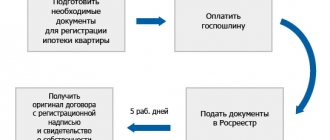Pregnancy and the birth of a child are certainly a joyful and important event in the life of every family. At first, the child needs the constant presence and attention of the mother, and because of this, women simply do not have time to work. Therefore, for such cases, the so-called maternity leave was invented. So what is it? We decided to understand this difficult topic, find out how to correctly calculate payments, how to arrange this leave and how long it can last. Fatima Margiani , an obstetrician-gynecologist at the Taganka Women's Medical Center, helped us with this .
What it is
Let's start with the fact that in the law of the Russian Federation there is no such thing as “maternity leave”. This is an outdated name that is still popular among people. The fact is that this phrase appeared back in 1917, when there was a decree “On maternity benefits.” At that time, a decree was a document issued by government authorities. In some countries this concept has been preserved to this day, but in Russia this term has long been forgotten. Therefore, today in the professional sphere there are two concepts that correspond to the situation:
• maternity leave; • Holiday to care for the child.
These two options can be considered the only correct ones. In addition, it is worth noting that this is not just a vacation, because it is issued on the basis of a sick leave certificate. We suggest you study the list of all necessary documents.
conclusions
Annual rest within 28 calendar days before maternity leave is the right of any pregnant woman officially employed by the company.
An employee must be provided with rest time regardless of her length of service and unused vacation days.
Each vacation day is paid in the general manner - based on average earnings for the last 12 months.
Annual leave must immediately precede maternity leave; there should be no return to work between these two periods, otherwise the employer has the right to refuse the employee.
Leave is granted only if the woman herself wishes, based on her application. Management does not have the right to refuse or force someone to take a break.
What documents are needed for registration?
Maternity leave should be taken care of in advance. We advise you to notify your employer so that management can find a replacement during your absence. As for documents, when going on maternity leave, you need to provide the employer with an application for the necessary rest, an application for benefits, as well as a sick leave sheet, which will reflect the time period during which the woman will be absent from the workplace.
These documents, after being signed by the manager, are sent to the accounting department, where an order for granting leave is drawn up, benefits are calculated and paid to the expectant mother.
In addition, the following papers must be submitted to the accounting department: • sick leave, which indicates the entire period of incapacity for work; • certificate of registration at the antenatal clinic. Its presence is not mandatory; • application addressed to the employer; • passport; • identification documents; • in case of a recent change of job, a certificate of income for the last two years is required; • a document from the bank, which contains the account number for further benefit accruals.
pixabay.com/Free-Photos
Two ways to “close” a maternity bet
To ensure the functioning of the position from which the main employee went on maternity leave, the employer has two possible ways. Each of them provides its own design nuances.
- Internal translation or combination . Sometimes management does not want to hire an outsider, preferring to distribute responsibilities among already working people. If labor functions do not contradict the qualifications of employees already working at the enterprise, then new responsibilities can be assigned to them on the basis of an additional agreement to the employment contract and an order from the manager. In this case, you do not need to enter anything into the work book; a note can be made on your personal card.
- Conclusion of a fixed-term employment contract . Occurs when a new employee is temporarily hired to fill a maternity position. In this case, an order for employment is necessary, as well as making an entry about it in the work book. A personal card must be created for a new employee, even if declared as temporary.
Making a statement
A well-written application guarantees you no problems at subsequent stages. It must be written in person; it must indicate the reason and time frame during which the employee will be absent from work. In addition, the paper must reflect the request for the accrual of benefits. The document looks like this:
• “header” - it is located in the upper right corner of the document. It indicates the full name of the applicant employee, her position, the name of the organization, as well as the surname and initials of the immediate supervisor; • the title of the document “Application” is written without quotation marks and is located in the middle; • the main text of the document can be written in free form, the main thing is to accurately and correctly indicate the need for leave, write its correct name, indicate the dates and periods when you will be absent from work. Don't use the word maternity leave! • do not forget to indicate the need to accrue benefits; • then list all the documents that you are attaching to the application: the original sick leave certificate and a doctor’s certificate confirming the pregnancy and indicating the dates; • in the lower right corner the applicant signs, dates and writes her last name and initials.
Deadlines
The duration of maternity leave directly depends on how the woman experienced the period of bearing a child and how the birth itself went. Now in Russia there is a scheme that you can rely on and understand how many days of rest a pregnant employee is entitled to:
• 140 calendar days - a woman goes on vacation 70 days before the day of birth and rests for another 70 days after the birth of the child. Issued to those who have given birth to one child and whose pregnancy proceeded normally; • 156 calendar days - the essence here is simple, because 16 additional days are added to the 140 allotted days. Such leave is granted to those who have one child in the family, but the birth was accompanied by complications. Issued 70 days before birth; • 194 calendar days - such a long leave is given to those who are expecting the birth of more than one child. Issued to women who feel normal during pregnancy. They can go on vacation 84 days before the birth of their children. It is also worth noting that the same long leave is granted to those who only learned about a multiple pregnancy during childbirth. After the birth of a baby, a woman is given sick leave for 54 days, which is added to the required 140 days; • 156 calendar days - allocated to those women whose pregnancy ended between 22 and 30 weeks. This leave is issued from the moment of premature birth; • 70 calendar days - due to those who adopted a child under three months old. Employees can go on this leave from the day of adoption; • 110 calendar days - issued to employees who have adopted more than one child under three months.
Pregnant women who live or work in places with increased radiation contamination can be placed in a separate category. In such cases, leave is issued 90 days before the expected birth, and its duration depends entirely on the condition of the expectant mother. Thus, women whose pregnancy proceeded normally can count on 160 calendar days, 176 days are allocated for those who experienced complications during childbirth, 200 days of leave are given to those whose family has two or more children.
It is worth noting that it is the complexity of childbirth and the number of children that regulate the number of vacation days. If the pregnancy was multiple, then the process of giving birth to children will be considered difficult in advance. The law provides for these nuances to ensure the optimal number of rest days for new mothers.
We have also explored other options for the development of events. Let’s say a woman refused maternity leave, but later decided to take it. In this case, the sick leave certificate will not include the full time period of leave due to the expectant mother, but will include dates taking into account the missed time. Thus, the period of leave before childbirth may be slightly reduced.
It also happens that sick leave certificates are not issued to pregnant women due to the fault of doctors. The reasons may be different, but one thing is worth noting - the duration of validity of such a disability document is not reduced.
“According to Russian legislation, maternity leave is granted to a woman from the 30th week of pregnancy. In the case of multiple births, from the 28th week,” Margiani clarified.
pixabay.com/
Right to rest under the Labor Code
The legislation of the Russian Federation provides for the right to rest for all employees who work under permanent, labor and temporary contracts. Different enterprises can provide their employees with different types of vacations, each of which has its own conditions and duration provided for in the Labor Code:
- Annual paid leave is discussed in Article 114, which states that the employee’s place and salary are maintained while he is on annual leave.
- More details about long-term leaves are stated in Article 116, which states that not only those who work in conditions of increased harmfulness have the right to additional paid leave, but also those who work in the Far North, have irregular working hours or special specifics of work.
- The first full leave can be obtained after six months of work (Article 122 on the procedure for granting annual paid leave). Under certain circumstances (pre- and post-maternity leave, contract with a minor employee, or an employee with adopted infants), leave may be provided earlier.
- With the mutual consent of both parties, vacation can be interrupted or divided into parts (Article 125). Unused days are attached to future vacation or can be used at the request of the employee.
- Pregnant women can use their annual leave immediately before the start of maternity leave. In this case, the possibility of calling an employee back from vacation is completely excluded.
Holiday to care for the child
If everything is clear with maternity leave, then what should those who need time to care for their baby do? It turns out there is a vacation designed specifically for such an occasion.
As we said earlier, in everyday life women very often call this type of leave maternity leave. However, this is far from true, since disability here can have two reasons:
• birth of a child; • baby care.
And here it is very important not to make mistakes when writing an application addressed to the employer. After all, it’s quite easy to find out in a conversation, but in the document you need to correctly write that parental leave is required for up to one and a half or three years. We will make your task easier and give you some useful facts:
• in Russian law there is no such thing as “maternity” leave, so try not to confuse the concepts; • maternity leave is granted after submitting an application and providing sick leave. It is paid exclusively by the employer, who receives money from social insurance. Payments are calculated based on 100% of the employee’s average earnings; • parental leave is also provided upon submission of the appropriate documents, however, payments there will be significantly less, since they are deducted based on 40% of the average salary; • if parental leave is required for up to three years, no payments are made.
Advantages and disadvantages of the maternity rate
Taking a temporary position related to the maternity leave of the main employee has both positive and negative aspects. Before agreeing to such a job, it is worth analyzing them.
Disadvantages of maternity pay
- The inherently transient nature of the work . When applying for a maternity position, a person must be aware that he will have to leave it.
- Unpredictability of deadlines . Since a “maternity leaver” has the right to be absent for either 140 days or more than three years, it is impossible to predict when the cooperation will end and plan further employment. If the term of the employment contract comes to an end, the employer may not even warn about the impending freedom in the usual two weeks: if the employee-mother returns to her position suddenly, the employee taken in her place will be fired on the same date.
- Minimum guarantees. Dismissal under this type of contract will not occur at the initiative of the employer, but due to circumstances that do not depend on the will of the parties: after all, the return of the main employee from maternity leave cannot be planned.
Such a reason for dismissal does not guarantee social protection and additional compensation payments: a pregnant woman, a single mother, or a person caring for a disabled person can be fired.Upon dismissal, such an employee will receive only regular wages and compensation for annual leave if he did not have time to use it.
- Insecurity in the event of one's own pregnancy . When working in a maternity position, a pregnant woman who has not managed to receive the coveted certificate of incapacity for work from the antenatal clinic can be mercilessly fired at any day without maintaining her seniority and assigning payments relying on the child.
Potential benefits of maternity leave
- Less stringent selection . A maternity vacancy is often a good chance to take a position that would otherwise be inaccessible to a candidate. Temporary work allows the employer to somewhat reduce the criteria for the experience, qualifications and personal qualities of the replacement employee. Often the time during which the employer must find a replacement also works for the applicant.
- New experience . While working on maternity leave, an employee acquires relevant skills that will be useful to him in future employment. Even if you take into account that the job is temporary, it may last long enough to get a job entry and the right to indicate additional experience in your resume.
- An opportunity to prove yourself . Temporary cooperation often represents a long probationary period, as a result of which management can decide on employment on a more secure basis. If there is a vacancy, it is more convenient and profitable for an employer to hire an already proven specialist than to select third-party people. In practice, most specialists who replace maternity leavers receive permanent work immediately or shortly after the departure of the main employee.
- Ordinary labor rights . A maternity rate is, although temporary, official employment with all the required guarantees: annual leave, the right to take sick leave, a salary not lower than the salary of the departing employee, and possibly receiving bonuses. While working in a maternity position, work experience follows the usual procedure.
How to calculate
In order to calculate the amount of benefits that will be paid during vacation, you can use an online calculator on specialized websites. However, there is a simple formula that will help you do the calculations yourself.
So, this year the amount of benefits can be easily calculated by multiplying the average daily earnings by the number of vacation days. If you have difficulty calculating your average daily earnings, you can find it out by adding up your income for the last two years and dividing them by 730 days.
It is worth noting that the minimum maternity benefit that a woman can count on is calculated based on the minimum wage (minimum wage). Since the minimum wage in 2021 is 12,130 rubles, this means the minimum maternity benefit in 2021 is 55,831 rubles. A woman can count on such payments if she has no previous jobs.
Using this simple scheme, you can identify future payments for yourself. But many women fear the payments will be taxed. We hasten to dispel all your fears, because vacation benefits are not subject to taxation.






